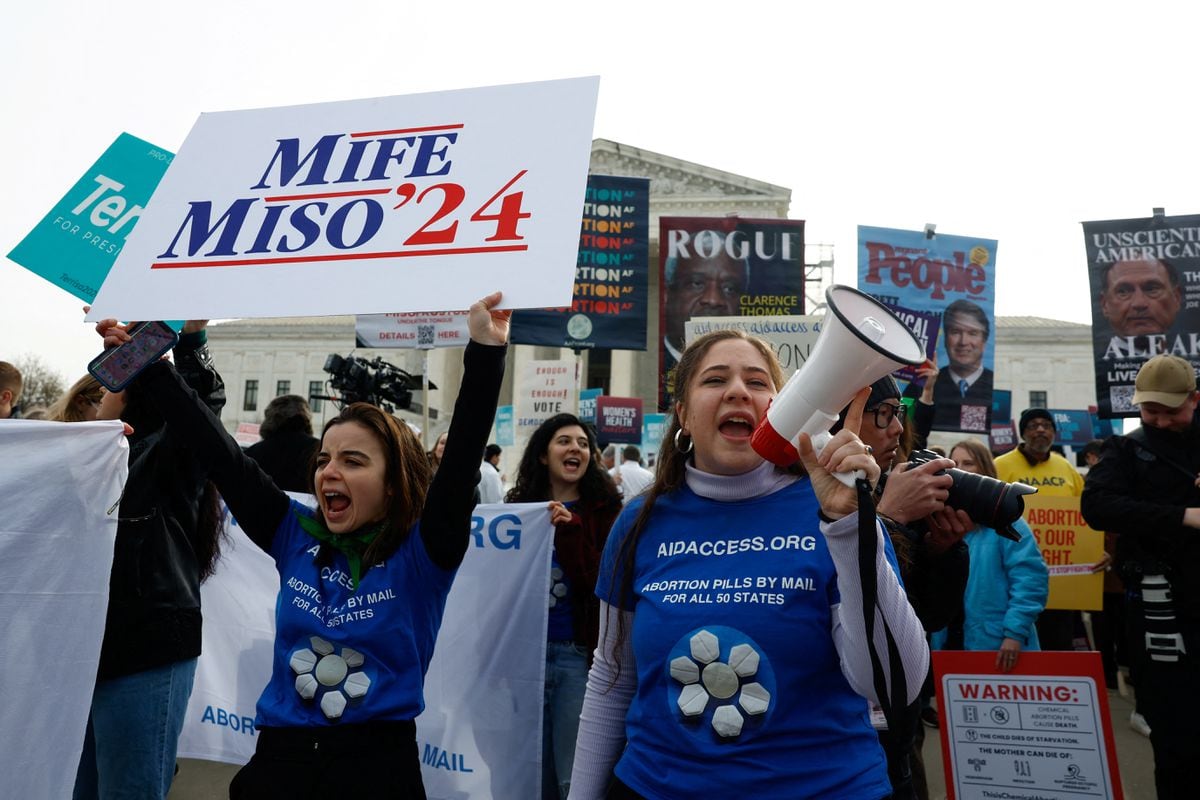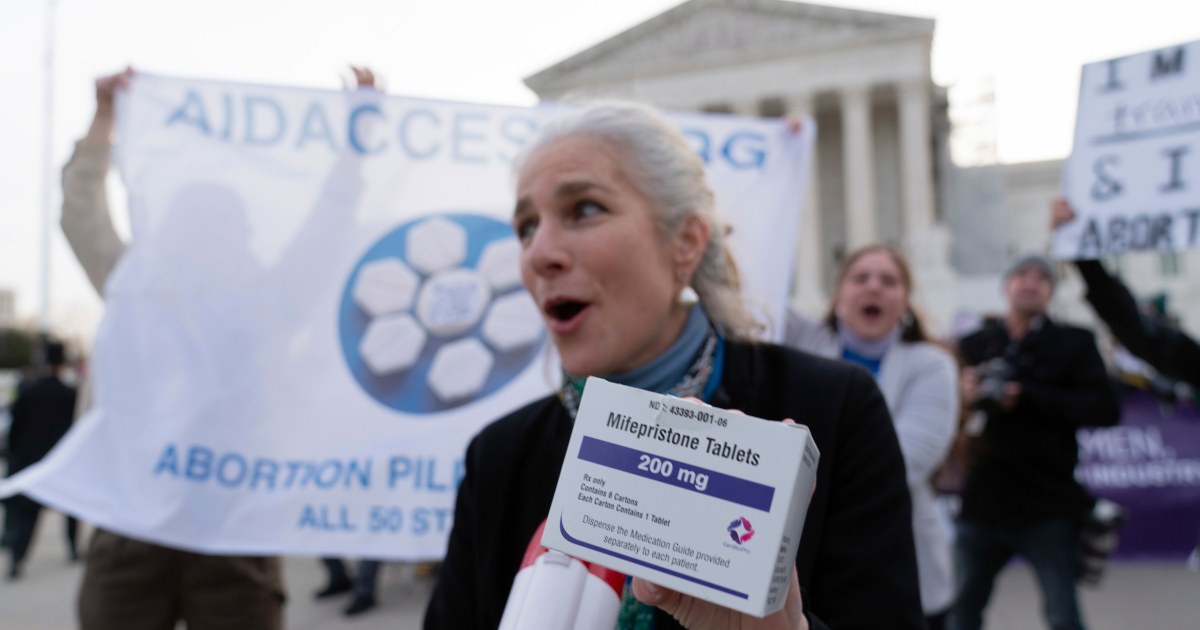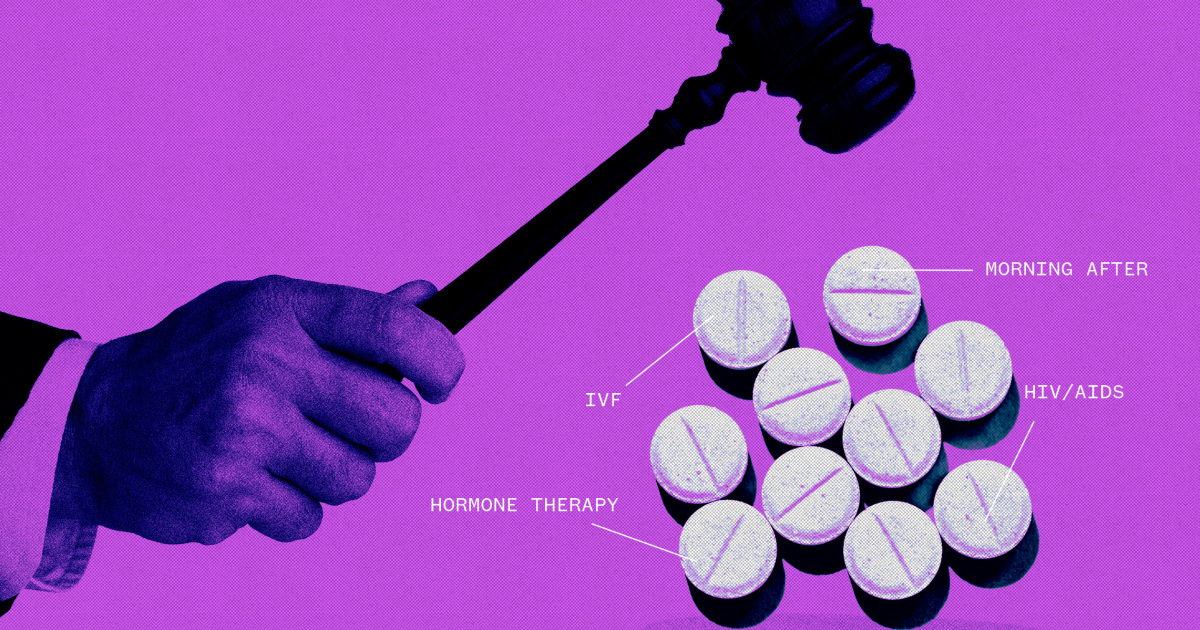- Click to share on Facebook (Opens in a new window)
- Click to share on Twitter (Opens in a new window)
- Click here to share on LinkedIn (Opens in a new window)
- Click to email a friend (Opens in a new window)
Lower the number of abortions in the US 0:40
Editor's Note: Alexis McGill Johnson is the interim president and the executive president of the Planned Parenthood Federation and Planned Parenthood Action Fund. The opinions expressed in this column are those of the author.
(CNN) - This week in Los Angeles, a senior in high school was walking down the hall. Perhaps she came from her math class and headed to the Planned Parenthood Wellness Center of her school, where a nurse helped her decide which contraceptive method was best for her when she went to college. Meanwhile, in St. Louis, a woman who had to travel about 320 kilometers to get an abortion was forced to hear mandatory state information. By state law, he had to return at least three days later to have the procedure.
- READ ALSO: In the March for Life, Trump demonstrates that he understands the power of the abortion issue
These hypothetical women represent the two extremes of medical care in reproductive health in the US. Forty-seven years after Roe v. Ruling. Wade in January 1973, our nation remains trapped in a dichotomy between the world that is possible and one in which it is attacked, stigmatized and in some cases medical care in reproductive health is penalized.
This story of two cities is the reality of sexual and reproductive health throughout the United States. While some states have made significant progress in expanding access to health, ensuring that information is really available, and investing in people's future, others have done everything possible to restrict access to health and the freedom that this entails. .
USA recognizes the right to abortion since the Supreme Court ruled in Roe that the Constitution protects the freedom of people to end a pregnancy, free of burdensome government restrictions, and reaffirmed it in the 1992 decision of Planned Parenthood vs. Casey
However, Roe's protections have always suffered the siege, from decades of state restrictions to the discriminatory Hyde Amendment, which prevents the use of government funds to cover abortions and leaves many low-income people without resources. These restrictions produced what are known as “abortion deserts”: places where the right of access to abortion exists only in name, due to income restrictions, lack of providers or onerous state restrictions.
The siege continues today. This week, President Trump was the first acting president to speak in person at an anti-abortion event, the so-called March for Life. We have seen that this impulse to put an end to the ability of Americans to access abortion is materialized in our policy and our measures: the Trump-Pence government has filled 1 out of 4 life places in federal courts of appeal with judges that will continue to erode Roe's protections.
In 2019, according to the Planned Parenthood account, there were over 300 restrictions on abortion in 47 states, including some of the most extreme prohibitions since Roe's ruling was decided. And Roe himself could be in the line of fire this spring when the Supreme Court revises a Louisiana abortion law.
At the same time, politicians are dismantling access to abortion: last week, the Supreme Court took a case that could hinder access to contraceptive methods. This shows that we are not only witnessing a war against abortion, but also a coordinated attack against reproductive care.
For people across the country, these types of attacks mean that the type of health care they can access many times depends on their zip code.
Without going any further, let's think of the woman from Missouri. For more than a decade, state politicians have been building restrictions to prevent women's access to abortion. This includes a waiting period of 72 hours, burdensome building requirements such as extra wide aisles and, until last year, additional pelvic exams that are medically unnecessary.
These attacks left Missouri with a single health center that provides abortions - a Planned Parenthood health center - for a population of 1.1 million women of reproductive age in the state.
The already limited access to this type of care in the state was attacked again last year when Governor Parson signed one of the most extreme prohibitions against abortion since the Roe ruling. The rule makes abortion illegal at eight weeks, before many women have even learned that they are pregnant. And before that prohibition went into effect, the state tried to use the authorization process as a weapon to close the last of the health centers that perform abortions, refusing to renew the license. (A federal judge has blocked this ban since.)
Compare this to the experience of your counterpart who lives in Los Angeles. In 2002, California codified Roe's protections in its state constitution. Since then, there is still visionary work in that state on how high quality reproductive health care can be. This allowed launching a flagship program last month and opening 50 wellness centers in high schools and on all Los Angeles county campuses. There, young people are given information about their sexual and reproductive health.
These centers offer preventive health and education services to students in their own institutions, confidentially and free of charge. I visited one of these centers at Torres High School in October and saw the empowerment unfold in real time when a young woman asked the nurse the questions she couldn't ask her mother. I witnessed the moment when this young woman realized that she could act and that she could make decisions about her body without being scolded or humiliated.
As in California, states across the country have taken steps to bring women closer to the world promised by Roe. Last year, New York, Rhode Island, Illinois and Vermont enacted laws to protect the right to abortion. In fact, of all the measures approved since 2011 to protect access to pregnancy termination, a quarter were approved last year. This is aligned with the will of the American people: almost 8 out of 10 citizens do not want Roe to reverse, according to the NPR / PBS News Hour / Marist poll.
But despite the historical support for reproductive freedom, it has become clear that the fight to protect it has become increasingly local. While the courts have long been the main line of defense for protectors of the right to abortion, with Judges Neil Gorsuch and Brett Kavanaugh in the Supreme Court, they cannot be our only safeguard.
When state legislative sessions across the country begin this month, each of us should pay attention to how our representatives work to strengthen and expand Roe's protections. And we must defend and fight together for these rights when they are attacked.
On this 47th anniversary of Roe, we must embrace the simple view that the experience of a young woman from Missouri should not be different than that of a young woman in Los Angeles. We must advocate that people in states where access is severely limited can see progress in other places and can think "those could be us." Because this is what we know: when people recognize what freedom looks like, they will fight to make it their own.
Abortion Decriminalization of abortion Laws



/cloudfront-eu-central-1.images.arcpublishing.com/prisa/OCS7V4Q6YKB6UMI76BXPPNGQJE.jpg)





